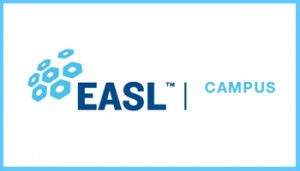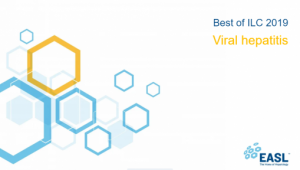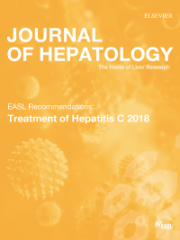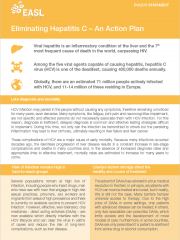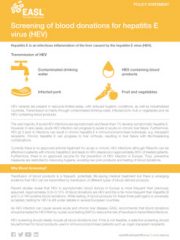Explore the Viral Hepatitis track at Digital ILC 2020

The curative potential of direct-acting antivirals (DAAs) for hepatitis C virus (HCV) infection have transformed hepatology in recent years. However, the challenge of identifying more people living with HCV remains, and further progress is needed with other forms of viral hepatitis. The Viral Hepatitis track at the Digital ILC 2020 updates on our progress towards HCV elimination and highlights the latest breakthroughs in finding a cure for hepatitis B.
The World Health Organization has called for elimination of viral hepatitis as a global public health threat by the year 2030 and the Digital ILC 2020 will provide a platform for leading experts to discuss the remaining obstacles to HCV elimination and review the upcoming treatments and new insights for other forms of viral hepatitis.
The Viral Hepatitis programme will allow you to learn, share, and interact, due to its engaging structure containing poster tours, abstract sessions, interactive sessions, industry symposia, meet the experts, and wrap up sessions.
Digital ILC 2020 preview:
Highlights in Hepatitis B and D drug development
What is the latest in viral hepatitis research? What developments are in the pipeline for Hepatitis B and D?
To find out how this research area is evolving, watch this video, “Highlights in Hepatitis B and D drug development” from the session Co-Chair, Dr Markus Cornberg.
Save the date to watch the abstract session itself at Digital ILC 2020 on 28 August 2020, 11:00-12:30 CET.
Explore the Viral Hepatitis track at the Digital International Liver Congress™ 2020
Abstract session: Hepatitis B – Translational27 August 2020 11:00 – 12:30 Chairs: Peter Revill (Australia) & Barbara Testoni (France) |
Abstract session: HCV Long-term management27 August 2020 15:30 – 17:00 Chairs: Massimo Colombo (Italy) & Nina Weis (Denmark) |
Abstract session: Hepatitis B and D – Drug development28 August 2020 11:00 – 12:30 Chairs: Markus Cornberg (Germany) & Fabien Zoulim (France) |
Abstract session: Hepatitis C elimination28 August 2020 15:30 – 17:00 Chairs: Natasha Martin (United Kingdom) & Alex Thompson (Australia) |
Abstract session: HBV – Clinical29 August 2020 11:00 – 12:30 Chairs: Harry Janssen (Canada) & Sabela Lens (Spain) |
Meet the Experts: Hepatitis D: What should I do with my patients in 2020?29 August 2020 09:30 – 10:00 Chairs: Soo Aleman (Sweden) & Heiner Wedemeyer (Germany) |
HEV – From virology to treatment27 August 2020 17:00 – 18:00 Chair: Darius Moradpour (Switzerland) |
HBV – Pipeline of drugs aimed at HBV cure28 August 2020 17:00 – 18:00 Chairs: Patrick Kennedy (United Kingdom) & Anna Lok (United States) |
Poster tour: Viral Hepatitis A, B, C, D, E: Immunology27 August 2020 12:30 – 13:00 Chair: Ulrike Protzer (Germany) |
Poster tour: Viral Hepatitis C: Post SVR and long term follow up27 August 2020 15:50 – 15:30 Chair: Alessandra Mangia (Italy) |
Poster tour: Viral hepatitis B/D: Clinical aspects except therapy28 August 2020 12:00 – 12:30 Chair: George Papatheodoridis (Greece) |
Poster tour: Viral hepatitis C: Therapy and resistance28 August 2020 15:00 – 15:30 Chair: Christoph Sarrazin (Germany) |
Poster tour: Viral hepatitis C: Clinical aspects except therapy29 August 2020 12:30 – 13:00 Chair: Katja Deterding (Germany) |
Poster tour: Viral hepatitis B/D: Therapy29 August 2020 15:00 – 15:30 Chair: Pietro Lampertico (Italy) |
Poster tour: Viral Hepatitis A, B, C, D, E: Virology29 August 2020 15:00 – 15:30 Chair: Philip Meuleman (Belgium) |
Digital ILC 2020 wrap up session – Viral Hepatitis
29 August 2020 17:12 – 17:24
Chair: Geoffrey Dusheiko (United Kingdom)
Prepare yourself for the Digital ILC 2020
Selected articles from the Journal of Hepatology:
- Comparative characterization of B cells specific for HBV nucleocapsid and envelope proteins in patients with chronic hepatitis B
- Glecaprevir/pibrentasvir for 8 weeks in treatment-naïve patients with chronic HCV genotypes 1–6 and compensated cirrhosis: The EXPEDITION-8 trial
- Hepatitis B-related outcomes following direct-acting antiviral therapy in Taiwanese patients with chronic HBV/HCV co-infection
- EASL Clinical Practice Guidelines on hepatitis E virus infection
|
Discover on EASL Campus over 530 dedicated resources on Viral Hepatitis. |
(Re)discover the “Best of ILC 2019” Slide Decks |
EASL Clinical Practice Guidelines on Viral Hepatitis
Hepatitis C virus (HCV) infection is a major cause of chronic liver disease. As a result, in 2018, worldwide there were approximately 71 million chronically infected individuals. Clinical care for patients with HCV-related liver disease is advancing considerably. Most importantly thanks to an enhanced understanding of the pathophysiology of the disease. And also because of developments in diagnostic procedures and improvements in therapy and prevention.
EASL Recommendations on Treatment of Hepatitis C describe the optimal management of patients with acute and chronic HCV infections in 2018 and onwards.
Hepatitis B virus (HBV) infection remains a global public health problem with changing epidemiology due to several factors including vaccination policies and migration. Most importantly, all patients with chronic HBV infection are at increased risk of progression to cirrhosis and hepatocellular carcinoma (HCC). This depends on host and viral factors. Several subgroups of patients with HBV infection require specific focus. Most importantly, future treatment strategies to achieve ‘cure’ of disease and new biomarkers are discussed.
Therefore, the EASL Guidelines for Hepatitis B presents updated recommendations for the optimal management of HBV infection.
EASL Policy Statements on Viral Hepatitis
The aim of this policy statement is to inform policy-makers, health care professionals, affected communities and patients that HCV can- and should- be eliminated as a public health threat by 2030, or even earlier as could be the case in many central and western European countries.
We believe that medical associations and clinicians, in collaboration with other key stakeholders, such as patients and affected communities, play a critical role in eliminating HCV as a public health threat and we commit to working with the HCV community to do so.
The safety of blood products has been a concern during the last 5 decades. Subsequently, testing for HIV, HBV and HCV has been implemented in most countries world-wide. There is emerging evidence that also the hepatitis E virus (HEV) can be transmitted by transfusion of different types of blood-derived products.
As HEV infection can cause severe acute and chronic liver disease as well as a variety of non-liver disease manifestations, the aim of this policy statement is to inform policy makers about the possibility of preventing transfusion-transmitted HEV infection by screening blood donations for HEV RNA.
Read EASL’s Policy Statement on Screening of blood donations for hepatitis E virus (HEV)


